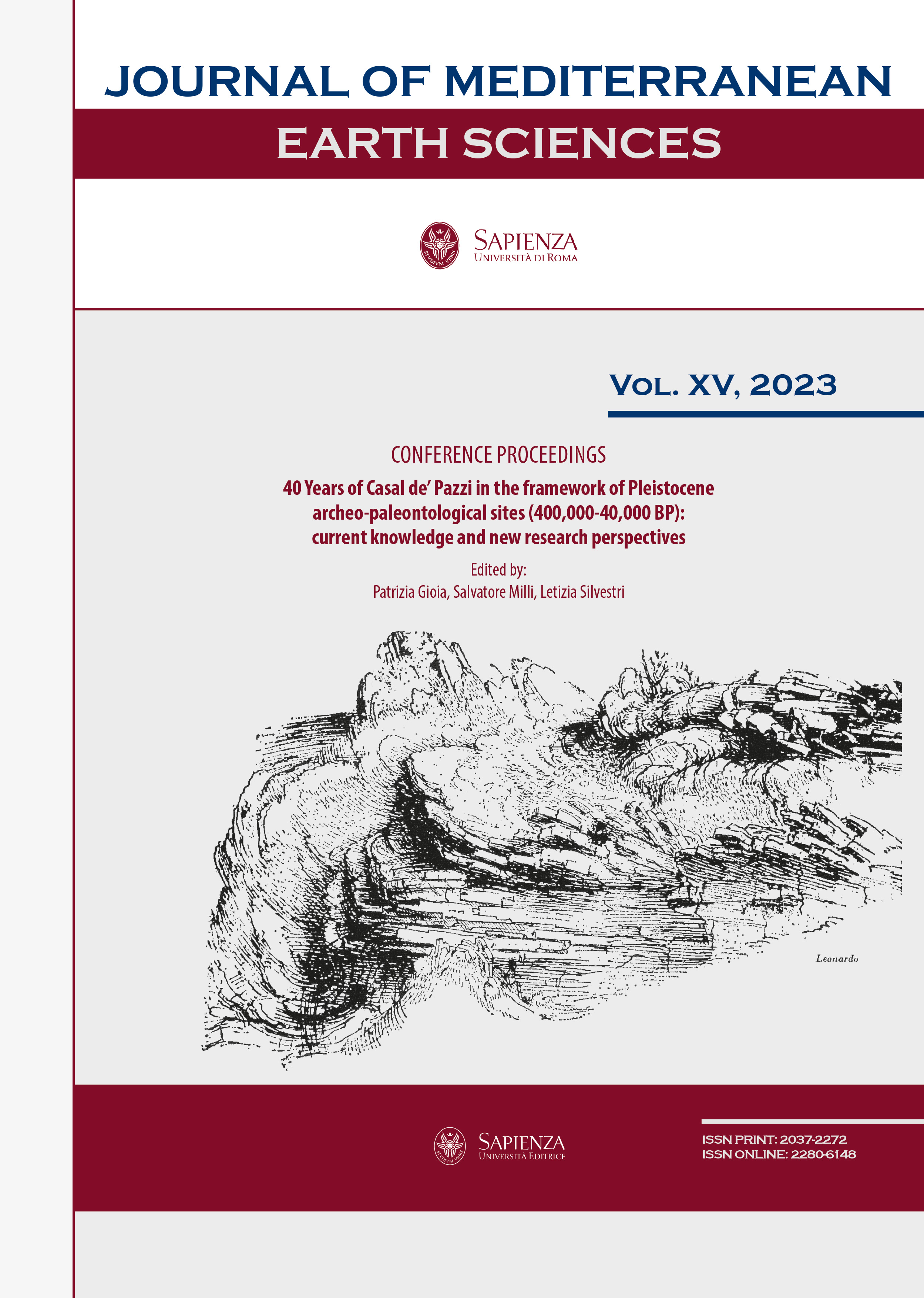Edaphic modifications vs anthropic activities at the Acheulean site of Guado San Nicola (Monteroduni, Isernia): a taphonomic perspective
DOI:
https://doi.org/10.13133/2280-6148/18327Abstract
The Middle Pleistocene site of Guado San Nicola (Monteroduni, Isernia) is an open-air site investigated in recent years by extensive excavations. Four anthropic layers have been recognized within a thick stratigraphic sequence attributed to the end of MIS 11 based on radiometric dating (40Ar/39Ar and ESR/U-Th combined) and the faunal assemblage composition. Numerous handaxes have been discovered in all the anthropic layers, together with bifacial shaping flakes referred to as the last stages of shaping/resharpening; the debitage component is characterized by the presence, among others, of a Levallois production. The faunal assemblage is composed by Ursus sp., Palaeoloxodon sp., Stephanorhinus kirchbergensis, Equus ferus ssp., Cervus elaphus acoronatus, Dama sp., Megacerini and Bos primigenius. Red-deer and horse are the most frequent species. Aurochs is always documented within the anthropic layers, while rhinoceros is scarce. Bear, fallow deer and megaceros are rare, while cervids’ antlers are over-represented. The zooarchaeological analysis revealed that butchery activities were carried out on rhinoceros, horse, and aurochs. The taphonomic analysis made it possible to distinguish the anthropic alterations from the edaphic ones. Several taphonomic factors modified the faunal remains: weathering, exfoliations, manganese, and iron oxides, trampling, sediment abrasion, root-etching, and, in several cases, floating. Moreover, several notches were recognized at the base of shed antlers that could be referred to as their intentional use as hammers. In conclusion, the zooarchaeological and taphonomic analyses suggest that the assemblage represents the result of anthropic accumulations, subsequently modified by different post-depositional factors of edaphic nature.
Downloads
Published
How to Cite
License
The submission has not been previously published, nor is it before another journal for consideration (or an explanation has been provided in Comments to the Editor).


